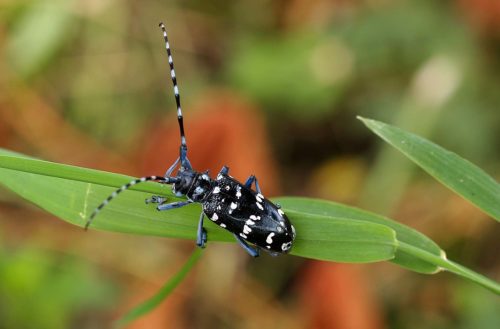Citrus long-horned beetle is a + 3 mm beetle. These belong in China and Korea. Citrus long-horned beetles can cause a lot of damage to shrubs, deciduous and coniferous trees.
Also known as:
Black and white citrus longhorn
Citrus root cerambycid
Asian Longhorned Beetle (ALB)
Citrus long-horned beetle (Anoplophora chinensis). These + 3 mm large Xke
The beetle is black with prominent white spots and has long, striped feelers.
Long-horned beetles can cause a lot of damage to shrubs, deciduous and coniferous trees. The tree species the Long-horned beetle favors are called ALB- (Asian Longhorned Beetle) host trees in the United States. The damage occurs because the worm-like larvae of the citrus long-horned beetle burrow tunnels into healthy, live trees. This is in contrast to the larvae of many other beetles that prey on dead wood. Burrowing tunnels in healthy wood affects the structure of the wood, allowing branches to spontaneously break off.
Citrus long-horned beetle quarantine measures are in place in the EU, the United States and the UK to prevent permanent settlement.
Control
Difficult to to control; this long-horned beetle is subject to strict quarantine measures. If an Asian longhorn beetle is found it must be reported to the Forest Research (EU), the UK Plant Health Risk Register and Animal and Plant Health Inspection Service (U.S.)
Prevention
Does not apply.

